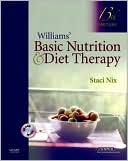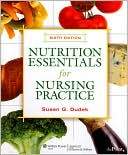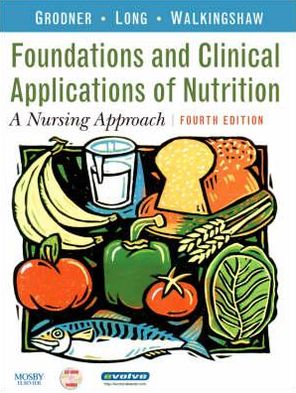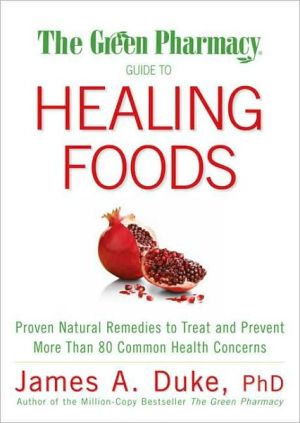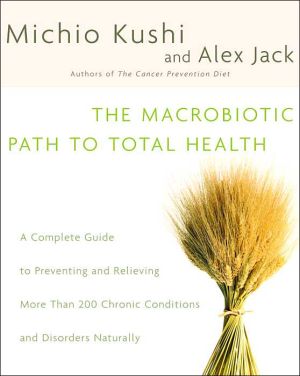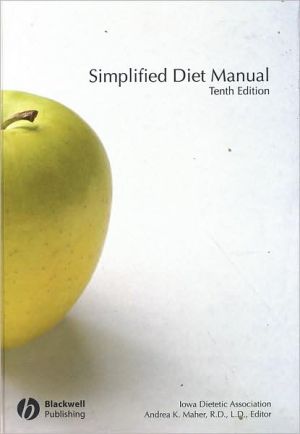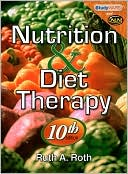Beat Crohn's: Getting to Remission with Enteral Nutrition
Beat Crohn's! Getting to Remission with Enteral Nutrition describes a strikingly effective dietary treatment for Crohn's disease that has been nearly forgotten in the US. The treatment involves using special liquid formulas (referred to as "enteral nutrition") instead of, or in addition to, regular food and beverages in order to induce and maintain remission.\ \ Enteral nutrition has been used by people with Crohn's since 1969 and has been tested in numerous clinical studies. Beat Crohn's...
Search in google:
Beat Crohn's! Getting to Remission with Enteral Nutrition describes a strikingly effective dietary treatment for Crohn's disease that has been nearly forgotten in the US. The treatment involves using special liquid formulas (referred to as "enteral nutrition") instead of, or in addition to, regular food and beverages in order to induce and maintain remission.Enteral nutrition has been used by people with Crohn's since 1969 and has been tested in numerous clinical studies. Beat Crohn's describes who can benefit from enteral nutrition, why patients might want to use it, what symptoms respond best, and how it compares with medications. Readers will also find practical tips on using enteral nutrition and stories of kids and adults who have tried it.Special features include a chapter on enteral nutrition in children, and another for people with ulcerative colitis, indeterminate colitis, and irritable bowel syndrome who have questions about enteral nutrition. In the last chapter, the author explores the latest research on supplements and special diets for people with Crohn's (fish oil, probiotics, and more!). Dietetics Today The book is easy to read and is detailed, accurate and well researched....It is a must read for all professionals involved in treating Crohn's disease.-Hazel Duncan, Paediatric Dietitian, Royal Shrewsbury Hospital
Excerpt from Chapter 1:\ \ This book describes a treatment for Crohn's disease that involves using enteral nutrition-special liquid formulas-to get into remission, stay in remission, gain weight, and reverse nutritional deficiencies. Enteral nutrition has been prescribed by doctors for patients with Crohn's disease since the late 1960s, and has been evaluated in numerous clinical trials from the 1980s through the present. It has been tested in kids and adults, in patients with both recent and long-standing disease, and in individuals with many different complications of inflammatory bowel disease (IBD). Like all treatments for Crohn's, it doesn't work for everyone. But when it does, here are some of the things it can do:\ \ • Enteral nutrition can induce remission in people with active Crohn's disease in as little as two weeks.\ • Enteral nutrition can succeed in people who don't respond to steroids and those who can't discontinue steroids without relapsing.\ • Enteral nutrition can restore normal growth patterns in kids who have stopped growing because of Crohn's. \ • Enteral nutrition can promote healing in diseased areas of the intestinal tract.\ • Enteral nutrition can do these things with almost no side effects.\ \ So why haven't I heard about enteral nutrition?\ \ Well, there is one disadvantage to enteral nutrition. If you want to use it to get into remission from Crohn's (as opposed to taking it simply to maintain remission or gain weight), you can't eat or drink anything except the liquid formula for approximately two to eight weeks. You won't starve-the formula fills you up and provides all of your nutritional needs-but you do have to be willing togive up your regular diet temporarily.\ \ Gastroenterologists in United States rarely mention enteral nutrition as a treatment option because they think it is too difficult to ask patients to give up normal food for a while. You are more likely to have heard about enteral nutrition if you live in Canada, Europe, Japan, or Israel. Doctors in these regions tend to have more experience using enteral nutrition for Crohn's, and are more likely to be aware of its benefits.1 The Japanese, for instance, use enteral nutrition as a primary therapy for active Crohn's disease and prefer it to steroids.2 In the United Kingdom, a survey of the members of the British Society of Gastroenterology found that 59% of the specialists who responded had prescribed enteral nutrition for their patients with Crohn's.3 But in most countries, enteral nutrition is not used as often as it might be. If doctors consider prescribing it at all, they tend to offer it primarily to children because of its beneficial effects on growth, and rarely mention it as a treatment possibility to their older patients.\ \ In part, this useful option may be overlooked because it's just too simple in a modern medical world that focuses on the complex. It's not a hot new treatment; it's been around for a long time, and many of us-doctors included-tend to look for the newest high-tech solution. To be honest, it's also much easier for a patient to take a medication every day than to comply with a liquid diet. Doctors realize this, and want to prescribe the treatment that is easiest for the patient. There are a fair number of drugs available to treat Crohn's disease, and they can be very effective for many individuals. So why not use them?\ \ The trouble is that the medications don't work for everyone, and even when they do, can have unpleasant side effects. They can also lose their beneficial effects over time. That means that patients with Crohn's disease need to know about all their treatment options, just in case the simplest and most convenient methods fail. Enteral nutrition isn't appealing to everyone and doesn't work for everyone. Nevertheless, it is important for patients to know that it exists. That's why I wrote this book. \ \ What will I learn? \ \ • In this chapter, we will learn what enteral nutrition is, who developed enteral nutrition and why (hint: NASA was interested!), and explore some of the hypotheses on why it works.\ • In Chapter 2, we will look at the pluses and minuses of the drugs most commonly used to treat Crohn's disease, and explore why and when you might want to consider using enteral nutrition instead.\ • In Chapter 3, we will discover the benefits of enteral nutrition in children with Crohn's.\ • In Chapter 4, we will explore the advantages of enteral nutrition for adults, including its use during pregnancy.\ • In Chapter 5, we will review the use of enteral nutrition for specific complications of Crohn's disease, such as perianal disease, fistulas, and strictures.\ • In Chapter 6, we will examine whether enteral nutrition is useful in ulcerative colitis, indeterminate colitis, irritable bowel syndrome (IBS), and celiac disease.\ • In Chapter 7, we will learn about the different types of enteral nutrition, and find out how each of us can choose a formula that is right for us.\ • In Chapter 8, we will get the scoop on how to get started and what to expect during a course of enteral nutrition.\ • In Chapter 9, we will examine whether people with Crohn's can benefit from other dietary regimens and supplements such as fish oil, probiotics, and low- or high-fiber diets.\ \ Copyright Margaret A. Oppenheimer 2009.
A Note to Health-Care Providers xvWhat is Enteral Nutrition? 1So why haven't I heard about enteral nutrition? What will I learn? Understanding enteral nutrition. A (very) brief history of enteral nutrition. Is this the same thing as TPN? Why does enteral nutrition work? What have we learned?Checking Out the Competition: Treatment Options for Crohn's 17Aminosalicylates. Corticosteroids. Antibiotics. Immunomodulators. Biologics. Surgery. How does enteral nutrition compare? Why choose enteral nutrition? It's not a lifetime commitment! What have we learned?Happy Kids, Healthy Bodies: Enteral Nutrition for Children 47A time-tested treatment. Comparing enteral nutrition and steroids. How effective is enteral nutrition in children? Enteral nutrition restores normal growth. Enteral nutrition can heal damaged tissues. Getting off steroids with enteral nutrition. How long will mychild stay in remission? How can I keep my child in remission longer? Maintaining remission with supplemental enteral nutrition. Supplemental enteral nutrition and growth. Can supplemental enteral nutrition induce remission? Which children respond best to enteral nutrition? What do children think about enteral nutrition? What have we learned?Good Stuff for Grown-Ups, Too! Enteral Nutrition for Adults 67How effective is enteral nutrition in adults? How does enteral nutrition compare with steroids? The case against enteral nutrition. Enteral nutrition can work when steroids do not. Endoscopies and biopsies prove that enteral nutrition works. Supplemental enteral nutrition: the easiest way to better health. Maintaining remission with supplemental enteralnutrition. Getting off steroids with supplemental enteral nutrition. Getting into remission with supplemental enteral nutrition. Supplementing: is more better than less? Who responds best to enteral nutrition? A safe treatment option during pregnancy. Is enteral nutrition too difficult for adults? What have we learned?Time for a Challenge: Enteral Nutrition in Complicated Crohn's 85Enteral nutrition in orofacial Crohn's. Treating fistulas with enteral nutrition. Enteral nutrition in perianal disease. Strictures and enteral nutrition. Enteral nutrition foresophageal Crohn's. Enteral nutrition after a resection. Enteral nutrition and extraintestinal symptoms. Enteral nutrition in transplant patients. What have we learned?But My Doctor Says It's Not Crohn's: Enteral Nutrition in Ulcerative Colitis, Indeterminate Colitis, and IBS 103What is ulcerative colitis? Enteral nutrition in ulcerative colitis. Enteral nutrition in indeterminate colitis. What is IBS? Can I use enteral nutrition to treat IBS? But do Ireally have IBS? A word about celiac disease. What have we learned?Decisions, Decisions! Choosing a Formula 115What's in my formula? What if I'd prefer a sugar-free formula? Comparing the formulas. If they all work the same, how do I choose? Is enteral nutrition safe for people with food allergies? Food intolerances and enteral nutrition. Choosing an enteral nutrition formula when you have short bowel syndrome. What formulas are available? Are there any vegan or vegetarian enteral nutrition formulas? Modular formulas. Building a better formula. Do-ityourself enteral nutrition? Where can I buy enteral nutrition? Obtaining insurance coverage for enteral nutrition. What have we learned?Go For It! Using Enteral Nutrition 143Convincing the doctor: why use enteral nutrition? What if my doctor wants me to use TPN instead? Do I need to take steroids along with total enteral nutrition? Can I use immunomodulating medications at the same time as enteral nutrition? Can I take metronidazole or aminosalicylates during enteral nutrition? In a cup or through a tube? How do I prepare the formula? How much formula do I need if I want to try total enteral nutrition? If I'm supplementing my regular diet with enteral nutrition, how much formula should I use? Do I need to take any dietary supplements along with my enteral nutrition? Can I have anything except the formula? Will the formula interact with any medications I am taking? Does enteral nutrition cause any side effects? Getting started: the first day. Will I still have bowel movements since the diet is all-liquid? When will I know if enteral nutrition is going to work? How long should I stick with enteral nutrition? How soon will my child start growing after beginning enteral nutrition? What will happen if I cheat on the diet? Is it cruel to make a child stick with enteral nutrition? What is the best way to reintroduce solid food? I'm gaining too much weight since I finished using total enteral nutrition. Why? If enteral nutrition works for me, how long will I stay in remission? It's been less than a month since I finished a course of enteral nutrition, and I've already relapsed. What should I do? If I use enteral nutrition, will I be healthier in the long term? What have we learned?Beyond Enteral Nutrition: The Real Truth About Diet in Crohn's 179Fiber or not? Testing a low-carb diet. Should I worry about yeast? Microparticles aren't the answer. All the fish in the sea. Looking toward the plant world. Food-exclusion diets: are they worth the effort? If you want to try food testing. Another approach to food testing. Is lactose a problem? What about probiotics? Prebiotics: a newer approach. What about synbiotics? The Specific Carbohydrate Diet: does it really work? The benefits of a well-balanced diet (Mom was right!) What have we learned?Appendix A. Understanding Growth Charts: How Does My Child Measure Up? 203Appendix B. Sources for Enteral Nutrition Formulas 209Notes 213Glossary 229Bibliography 239Index 280Acknowledgments 288 An Invitation to Readers 290
\ Take Charge (Crohn's and Colitis Foundation of America)"Beat Crohn's! Getting to Remission with Enteral Nutrition is skillfully written by Margaret A. Oppenheimer, an expert in enteral nutrition. For anybody who may be considering this treatment option, it will be an invaluable guide to implementing the diet and comparing it to other treatment options."\ \ \ \ \ Dietetics TodayThe book is easy to read and is detailed, accurate and well researched....It is a must read for all professionals involved in treating Crohn's disease.-Hazel Duncan, Paediatric Dietitian, Royal Shrewsbury Hospital\ \ \ Library JournalCrohn's disease can cause pain and major changes in lifestyle and sometimes leads to the surgical removal of large sections of bowel. Traditional therapies in the United States include drugs, nutritional supplements, and surgery, all of which can have major adverse effects. Medical writer Oppenheimer explains how enteral nutrition, a method of receiving one's daily nutritional requirements through a liquid diet, may be a safe alternative with outcomes that can be just as good as other therapies. She explains what enteral nutrition is, provides information on more traditional treatments for Crohn's, and uses research to show how enteral nutrition compares with those treatments. Types of formulas and methods of administration are discussed, along with benefits and drawbacks. Oppenheimer examines the special needs of children with Crohn's as well as other types of diets, such as low-carb, food-exclusion, and lactose-free approaches. The appendixes include a glossary, children's growth charts, and sources of enteral nutrition formulas, as well as an extensive bibliography. While providing no medical credentials, Oppenheimer offers a readable, well-documented book that will be of value in consumer-health collections.\ —Janet M. Schneider\ \ \

